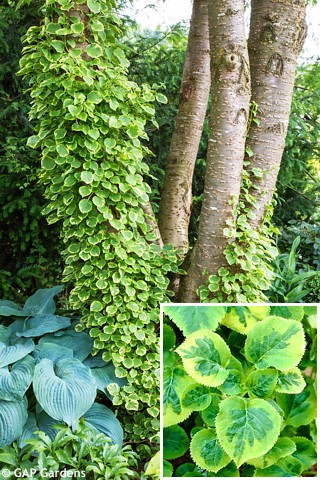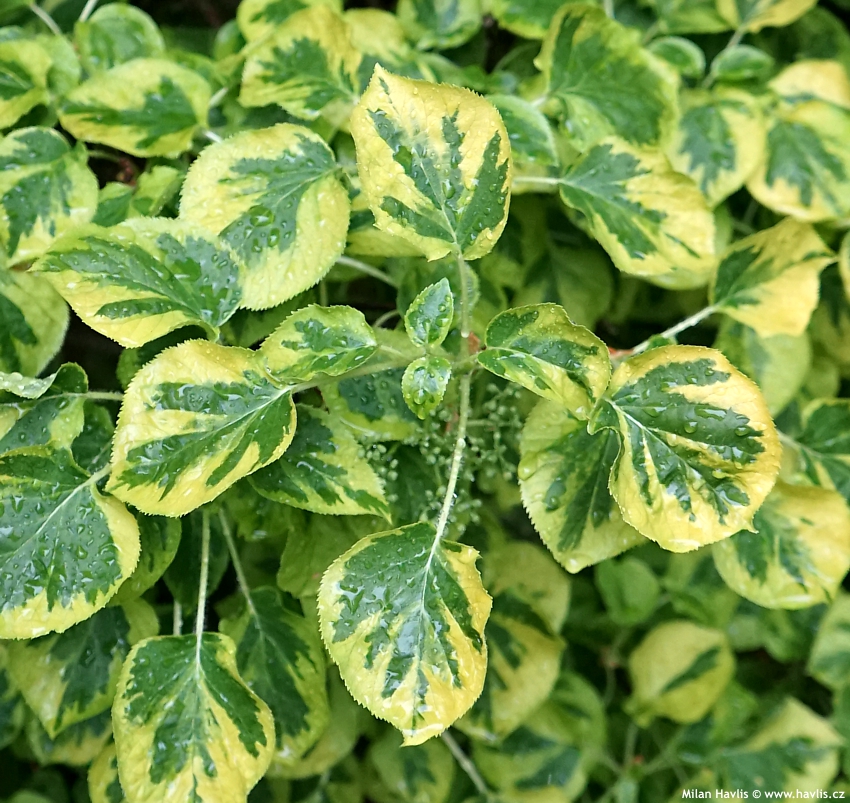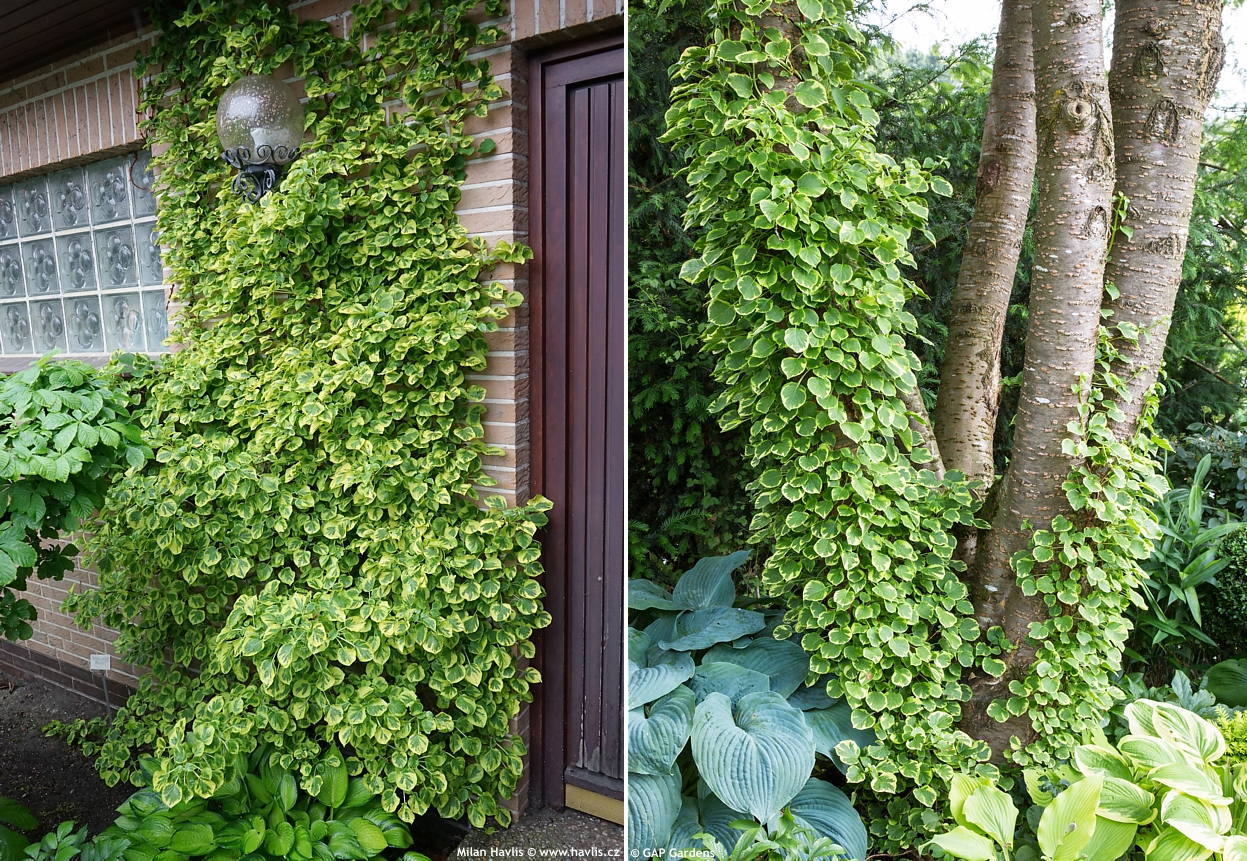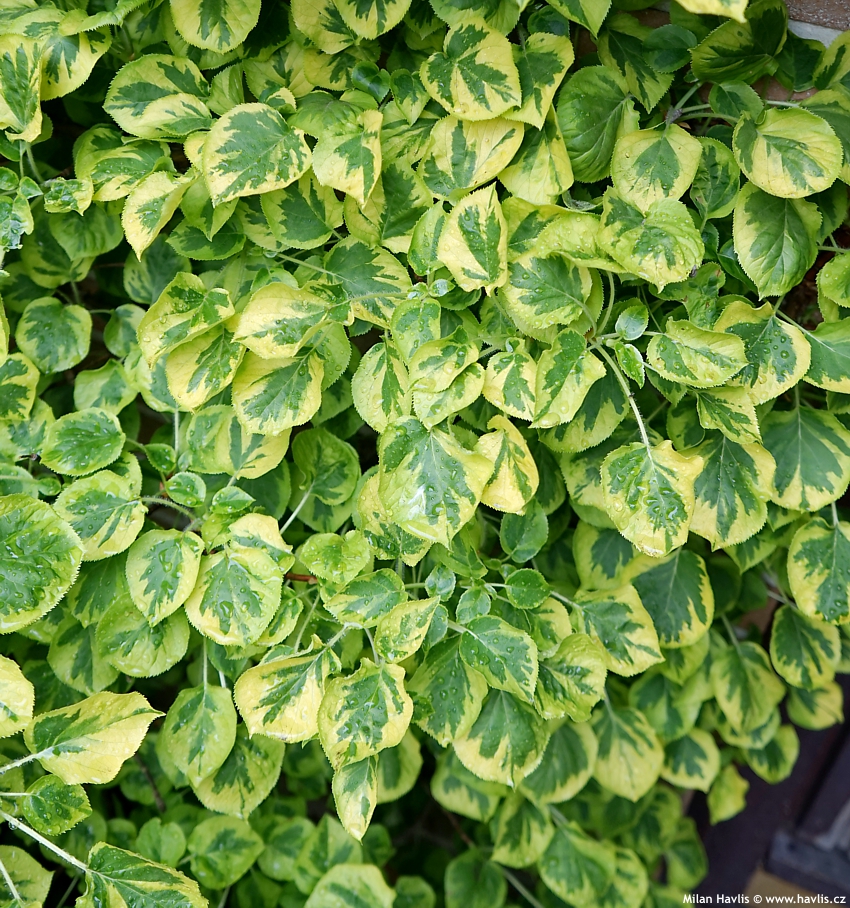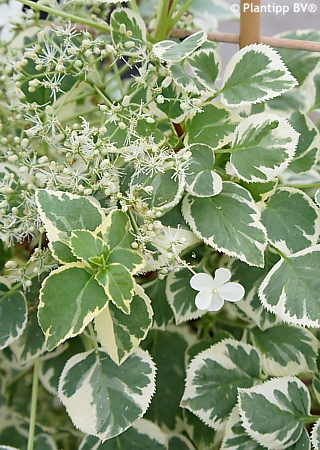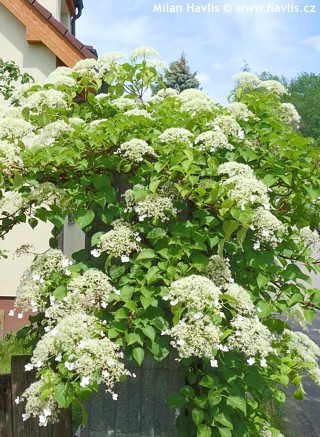Hydrangea anomala ssp.petiolaris 'MIRANDA' climbing hydrangea
Hydrangea
Are you looking for an extraordinary climber with attractive foliage and flowers, too? Climbing hydrangea could be your perfect choice. Its natural habitat is the area east of Asia – from Sakhaline, through Japan, Korea to Taiwan. Miranda is a yellow variegated form of this species and interestingly was found roughly at the same time as Firefly variety from 1999 but in a different location. Some sources list them as one plant which is not correct but putting them side by side no one can tell the difference.
Miranda is a popular variegated climbing hydrangea with medium large, dark green leaves with rich yellow brims. They are deciduous, 8-10 cm across, heart-shaped to almost rounded. The flowers come up from early summer until mid-summer. Only the flowers on the outskirts of the domed corymbs open up and remain open for a long time without a sign of deteriorating. Miranda is not a prolific bloomer and is valued mostly for its highly decorative foliage which perfectly covers its support. You can let it climb trees, fences, and walls or make it a shrub providing only a short central support, pruning off lateral branches regularly.
Climbing hydrangea makes aerial roots which reliably attach to its support and hold quite massive skeleton of thick branches. For this reason we advise providing a solid support so that the branches to not brake as the plants get stronger on flimsy hedges. If you wish to grow it in full sun water is at least once week. It needs cool and moist soil that is light and acidic, rich in humus. It performs best in part-shaded location and does well in shade, too. Fully hardy to -34°C (USDA zone 4).
Last update 28-09-2019

586,5 Kč

586,5 Kč
Goods are shipped all over Europe. For Russia and U.K. and for further details please read about SHIPPING OPTIONS HERE.
Are you interested in a serious discount for orders NOV-FEB? Check your options here.
THE PRICES INCLUDE VAT of 15%. For quick conversion you can use 1 CZK = approx. 0.04 EUR
- STANDARD QUALITY - Plants of this group are 1st class quality with number of branches and overall density adequate to their size and age, considering they were container grown.
- DE LUXE QUALITY - This label guarantees a luxurious quality of manually selected plants that, compared to their height and age, are exceptionally dense and beautiful.
- EXTRA - These plants are usually mature and bigger specimens with exceptional overall appearance.
- STANDARD (as described in the plant form) means a tree with a trunk of 190-210 cm and a crown at the top, unless specified differently. The commercial size for trees is their girth measured in the height of 1m from ground.
- HOBBY - These plants are of the same quality as our standard-quality plants but younger and therefore cheaper.
- SHRUB - a woody plant with branches growing bushy from the ground level.
- HALF-STANDARD or MINI-STANDARD - a small tree with shorter trunk, its size is usually specified.
- FEATHERED - These are trees with branches growing already from the base of the trunk and up along the stem.
- GRASSES and PERENNIALS - Sizes given usually read the diameter of the pot or the clump, as specified.

































